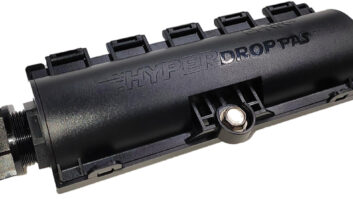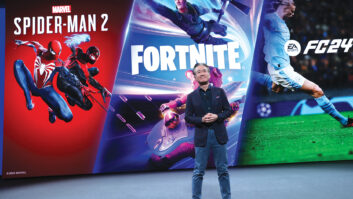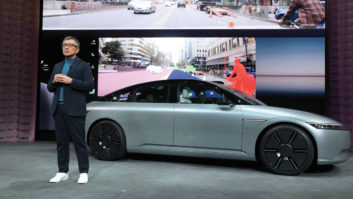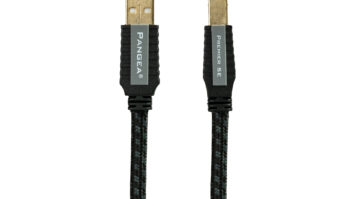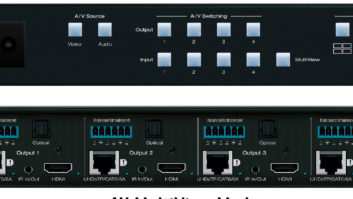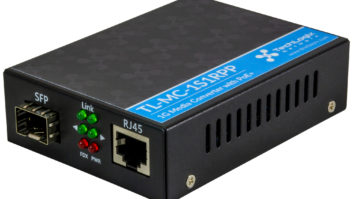So you’ve finally got your back against the wall and can’t find any way out of running a fiber optic strand or two to some problematic location that copper cabling and conduit just won’t resolve. Bummer.
So what do you do now? How many pairs, what kind of connectors, what kind of fiber, and, oh yeah, what the heck does this stuff mount into anyway? So let’s start with some fiber education, beginning with pairs, strands, and photons.
How many fiber strands does one actually need to run anyway? To start with, fiber doesn’t come in pairs; it comes in individual strands. Anyone running around quoting three-pair and six-pair fiber isn’t a fiber guy; he’s a wire guy. The reason for this is simple: fiber is immune to the electrical noise and EMI that gets coupled into standard copper wiring when it runs too close to fluorescent lamps, motors, and air conditioners. To minimize the effects of such noise, two copper wires are twisted about one another so that they both get roughly equal amounts of noise on them. Then, at the receiving end, they are compared to one another. Any noise present on one is also present on the other, so they cancel out, pretty much; you use two wires to rid yourself of the noise. Or on the other hand, you could just use one fiber strand and never actually have any noise to eliminate in the first place. So fiber runs in single strands, and has no need of twisting with anything else to make it work like it is supposed to.
Fiber is also almost always a single-direction communication path, meaning that there is a transmitter on one end and a receiver on the other, very much the same as standard copper wiring. So the communications signal goes from here to there, but there is no return signal from there to here. To get a true two-way bi-directional communications link then, such as out to a pool controller for commands to it and another to get the pool water temperature back, you will need two strands of fiber–one for each direction, again pretty much just as for typical copper RS-232 connections.
The reason for this in fiber is actually an economic one. There is no end of techniques for sending two-way communications across any fiber strand. However, it simply costs too much to put in the discrete components that it takes to figure out which signal is going out onto the fiber and which signal is coming in from the fiber. It turns out that it is essentially cheaper to throw a second fiber strand at the opposite direction and thus eliminate the cost of the discrete components.
The rudimentary nemesis of optical transmission in a fiber is optical reflection. It is all over the place, bouncing around within the fiber core, then reflecting off at an angle and actually exiting the core on a path to leave the strand. However, it gets “nudged” back into the fiber core by a peripheral coating that is applied to the central fiber core at the time of manufacture (referred to as the “cladding”). The effect is actually the same exact optical properties that everyone has seen when looking at a glass of water with a spoon or fork in it. The utensil looks to be slightly askew at the water line. This “bending” of the photons at the core-cladding interface redirects them back toward the center of the fiber core. They then return to the main fiber core pathway and continue down toward the actual end of the fiber strand itself. This nudging of the individual photons back into the fiber core pathway was the discovery that actually made long-distance fiber transmission viable, because it substantially reduced the optical light that was lost along the way.
As a result, photons that were “injected” into the fiber strand at roughly the same instant in time, start bouncing around within the fiber, getting nudged back into the center, and end up arriving at the far end of the strand at slightly different times. This then results in a “fuzzy” arrival time at the far end to indicate to the far-end optical receiver that the light is on, and that the digital one or zero has arrived.
Some of the photons will zoom there quickly, and others will bounce and reflect around within the fiber endlessly, arriving far later than the original quick photons (“far later” as defined in photon time is still pretty darn quick!). Ultimately this range in arrival times from the first photon to the last photon determines the maximum speed that can be supported by any fiber path. When the last photon of transmission signal #1 gets passed by the first and fastest photon of transmission signal #2, you can’t tell the signals apart from one another anymore, and you’re now going too fast. Fortunately, this fiber speed limit is way, way up there in gigahertz-ville, so there are not a lot of problems there to worry about until we address the streaming video possibilities of high-definition video transmissions.
Carl Easton ([email protected]) is the director of systems engineering at Axiom Design Inc. He has more than 20 years of experience in the optical telecom/datacom marketplace.
